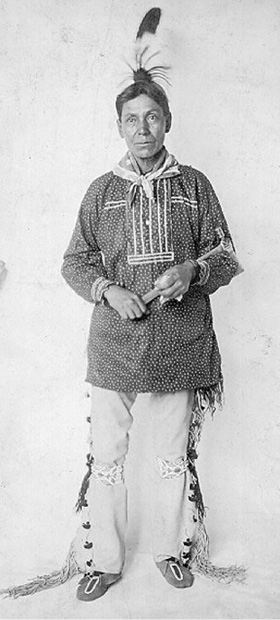Małgorzata Szejnert - Ellis Island: A Peoples History
Here you can read online Małgorzata Szejnert - Ellis Island: A Peoples History full text of the book (entire story) in english for free. Download pdf and epub, get meaning, cover and reviews about this ebook. year: 2020, publisher: Scribe Publications Pty Ltd, genre: Home and family. Description of the work, (preface) as well as reviews are available. Best literature library LitArk.com created for fans of good reading and offers a wide selection of genres:
Romance novel
Science fiction
Adventure
Detective
Science
History
Home and family
Prose
Art
Politics
Computer
Non-fiction
Religion
Business
Children
Humor
Choose a favorite category and find really read worthwhile books. Enjoy immersion in the world of imagination, feel the emotions of the characters or learn something new for yourself, make an fascinating discovery.
- Book:Ellis Island: A Peoples History
- Author:
- Publisher:Scribe Publications Pty Ltd
- Genre:
- Year:2020
- Rating:4 / 5
- Favourites:Add to favourites
- Your mark:
- 80
- 1
- 2
- 3
- 4
- 5
Ellis Island: A Peoples History: summary, description and annotation
We offer to read an annotation, description, summary or preface (depends on what the author of the book "Ellis Island: A Peoples History" wrote himself). If you haven't found the necessary information about the book — write in the comments, we will try to find it.
Ellis Island: A Peoples History — read online for free the complete book (whole text) full work
Below is the text of the book, divided by pages. System saving the place of the last page read, allows you to conveniently read the book "Ellis Island: A Peoples History" online for free, without having to search again every time where you left off. Put a bookmark, and you can go to the page where you finished reading at any time.
Font size:
Interval:
Bookmark:

ELLIS ISLAND
For forty years, Magorzata Szejnert (b. 1936) has been one of Polands most important nonfiction writers and editors, shaping a generation of Polish literary reportage. She began writing about challenging social issues in the 1970s, and was an active member of the opposition during the Solidarity period. After the fall of Communism, she co-founded Polands leading daily newspaper Gazeta Wyborcza and led its reportage division for 15 years. Since retiring, she has devoted herself entirely to book writing. Her topics range from Poland to America to Zanzibar, always with a warm, personal focus, allowing marginalised people to speak for themselves through her work.
Sean Gasper Byes translations of Polish literature include books by Lidia Ostaowska, Filip Springer, and Szczepan Twardoch. He is the former Literature and Humanities Curator of the Polish Cultural Institute New York and a winner of the Asymptote Close Approximations Prize. He received a National Endowment for the Arts Translation Fellowship to work on this book.
Scribe Publications
2 John St, Clerkenwell, London, WC1N 2ES, United Kingdom
1820 Edward St, Brunswick, Victoria 3056, Australia
3754 Pleasant Ave, Suite 100, Minneapolis, Minnesota 55409 USA
Originally published in Polish by Znak as Wyspa klucz in 2009
First published in English by Scribe in 2020
Text copyright Magorzata Szejnert 2009
Translation copyright Sean Gasper Bye 2020
All rights reserved. Without limiting the rights under copyright reserved above, no part of this publication may be reproduced, stored in or introduced into a retrieval system, or transmitted, in any form or by any means (electronic, mechanical, photocopying, recording or otherwise) without the prior written permission of the publishers of this book.
The moral rights of the author and translator have been asserted.
Every effort has been made to acknowledge and contact the copyright holders for permission to reproduce material contained in this book. Any copyright holders who have been inadvertently omitted from the acknowledgements and credits should contact the publisher so that omissions may be rectified in subsequent editions.
9781911617976 (UK edition)
9781925849035 (Australian edition)
9781950354054 (US edition)
9781925938210 (ebook)
Catalogue records for this book are available from the National Library of Australia and the British Library.
scribepublications.co.uk
scribepublications.com.au
scribepublications.com
For Marysia Drzewiecka and her home on Jamaica Hill
Contents
Part I
Part II
Part III
Part IV
Part V
Part VI
Part VII
Part I
Rising Tide
Lenni Lenape
The little island of the Lenni Lenape Indians is called Kioshk. It lies flat on the waters of the bay, tiny as a leaf. It is overgrown with salty marsh reeds, gray ivy, and coarse low-lying grasses. Europeans have already reached America, but here, quiet and emptiness prevail; the only sounds are of water, wind, and the calling of birds.
In the Lenni Lenape language, Kioshk means Seagull Island; a woman is xkwe , a snake xkuk , a horse nehnaonk s , a duck kakw , the sun and the moon kiux (as though day and night were the same), and Lenni Lenape means the True People. As time goes on, they are increasingly known as the Delaware. The new name comes from the river, or actually from Thomas, Lord Delaware scion of an old English family and governor of Virginia. So the True People lose not only their ancient hunting grounds, but also their ancient name. They accept the foreigners name, but they still tie their hair in a tight topknot, with a long, sharp feather stuck in it.

The Lenape lead a modest life on Seagull Island a few canoes, huts, and campfires. They fish and gather shellfish, which are so plentiful that in time Seagull Island is renamed Oyster Island. The oysters here are large, and fat enough to choke on. The Indians cut the oysters up with the creatures own shells, which are razor-sharp. When burying their dead both humans and dogs the Lenape seal the bodies up tight with these shells; they are indestructible.
Yet the True People no longer feel safe here, and in 1630 they sell the island to the Dutch West India Company. In exchange, they take certain cargoes or parcels of goods (a few years earlier, other Native Americans had sold nearby Manhattan in a similar fashion) and move deep into the mainland, leaving their ancestors on the island in their oyster-shell shrouds.
They will return nearly 360 years later, and will once again be called the Lenni Lenape.
Abandoned Oyster Island will pass from hand to hand. And although the shoals surrounding it grow more famous, and the island itself, with its oval shape, looks like an oyster (with a bite taken out of one side), its name changes once again, to Gibbet Island.
Pirates are hanged here, and one of these hanged men is so famous that for a time the island takes on yet another name, in his memory: Anderson.
In 1774, Samuel Ellis acquires it. He is a wealthy citizen of a huge country, though his purchase amounts to hardly anything. The Roman Coliseum takes up more than seven acres. The market square in Krakw some 4,000 miles from here is nearly ten acres. Seagull, Oyster, or Gibbet Island measures a little over three acres.
Samuel Elliss Transactions
The fish merchant Samuel Ellis lives among the 25,000 inhabitants of Manhattan, at 1 Greenwich Street a muddy road that is constantly flooded by the Hudson.
Perhaps he gazes on his new acquisition from his window when the bay is calm. Even in the present, as I write this (it is autumn and the trees in Battery Park are bare), the island is visible from here. Here meaning the place where Samuels house might have stood. Greenwich Street still bears the same name, but now, rather than house no. 1, at the point where the street begins, a concrete cube towers skyward, and cars continually plunge into an opening at its base. This is the entrance to the underwater BrooklynBattery Tunnel, which took over a million pounds of dynamite to carve out.
That being said, back then, no. 1 might have stood closer to the riverside: it could have been, for instance, at the spot where in 1926 the Dutch erected an ostentatious gift to the citizens of New York a giant flagpole. A bas-relief on the pedestal commemorates the contributions its donors made to the New World: a merchant in a ruff, a hat, and buckled shoes hands an Indian a string of beads; they both look very pleased.
Or perhaps Samuel Ellis would stand a few yards further along Greenwich Street maybe here, where a silver and gold ball was installed a few years ago, after being dug out from under the ruins of the World Trade Center. This shining sphere had stood in front of the Twin Towers as a monument to civilization and an aspiration for global unity; it was a masterpiece of artistry and technical skill, but now it looks like a crushed apple with its skin partly stripped off. Wherever it is Samuel Ellis might have lived, and wherever he might have looked out on his new acquisition, he had no concept of what he had bought.
The Key thats what the great architect Frank Lloyd Wright, or rather his intellectual heirs from the Taliesin Fellowship, wish to call the island. On it they intend to build Metropolis , a tangle of glass domes and cylinders, metal wires, and hanging terraces so dense it does not require a large space. But we are not there yet; for now, Samuel Ellis is living in his house on Greenwich Street, the 18th century is three-quarters through, and Wrights people wont announce their idea until the second half of the 20th century. In any case, they wont receive support for the drawings, or the name, although everyone can see how well-suited it is. A key can unlock the world or lock it. Exactly like Ellis Island.
Next pageFont size:
Interval:
Bookmark:
Similar books «Ellis Island: A Peoples History»
Look at similar books to Ellis Island: A Peoples History. We have selected literature similar in name and meaning in the hope of providing readers with more options to find new, interesting, not yet read works.
Discussion, reviews of the book Ellis Island: A Peoples History and just readers' own opinions. Leave your comments, write what you think about the work, its meaning or the main characters. Specify what exactly you liked and what you didn't like, and why you think so.











